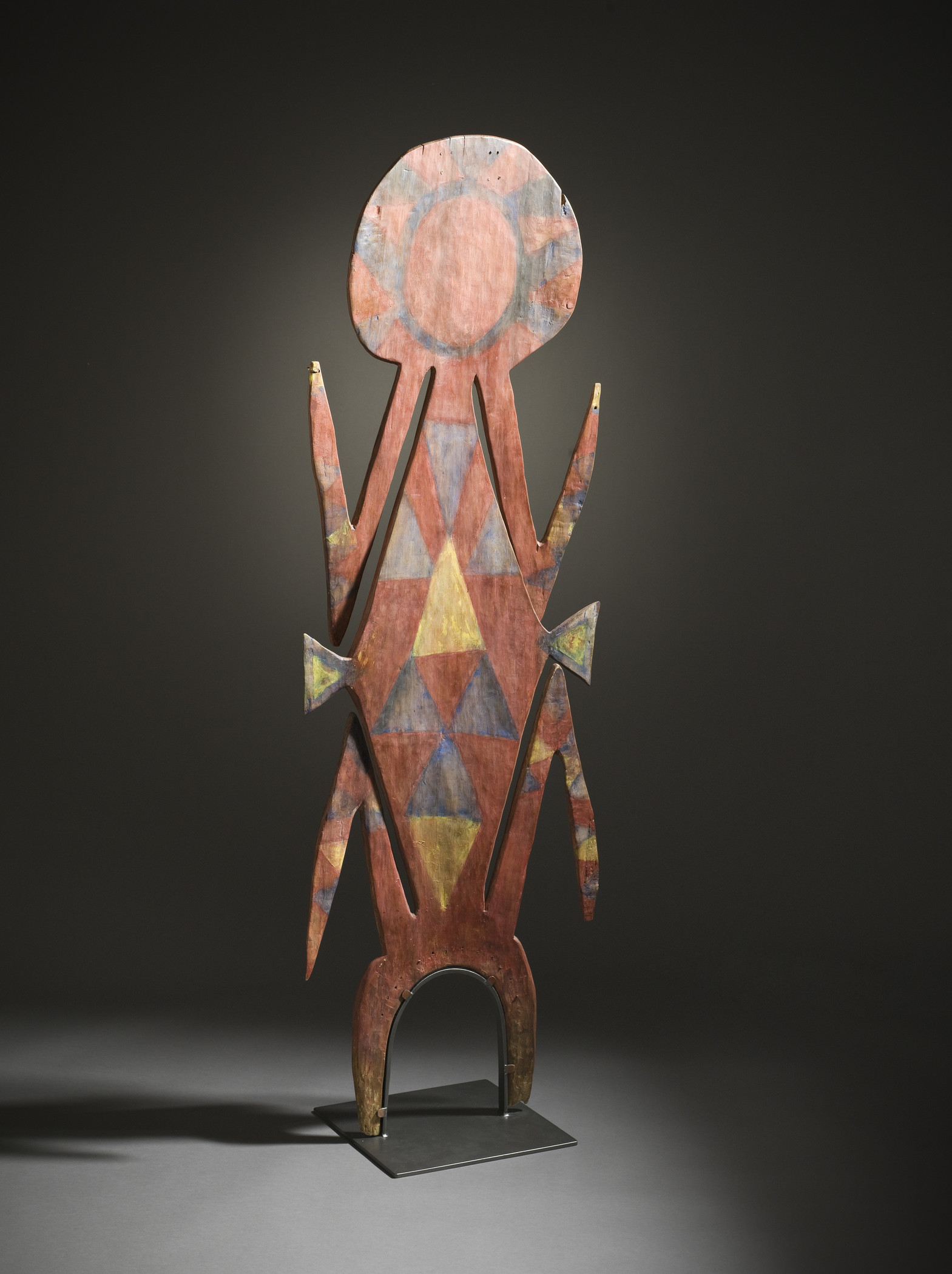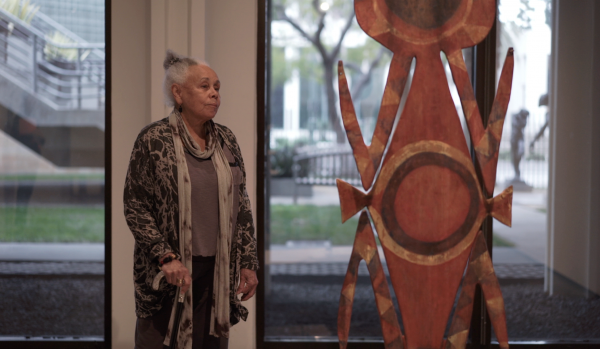As a member of the Black Arts Movement in the 1960s and ’70s, Betye Saar emerged as one the most incisive visual artists to address issues of race and history in the U.S. Her early collages and assemblages are now canonical. In recent decades she has extended into powerful, large-scale installations her broad interests in mysticism and folk art; African, Native American, and other non-Western art; racial and gender stereotypes; and personal memory.
For Artists on Art, LACMA’s online video series featuring contemporary artists speaking on objects of their choice from our permanent collection, Saar selected a ceremonial board (gerua wenena) made in Eastern Highlands Province, Papua New Guinea, by the Siane People circa 1955. Below are some highlights from Saar’s footage.
In advance of meeting today, you knew you wanted to talk in the Art of the Pacific galleries, but you had a hard time choosing a single object to speak on.
I like the art of the Pacific because the pieces themselves have so much mystery. The piece that I’ve selected to talk about is called a “ceremonial board,” which looks like it could be a shield, but that’s what the label said. My favorite kind of art is objects, art objects. I make art objects. Objects with paint on them are particularly intriguing. This ceremonial shield has paint on it and the design is very simple—triangles, circles, lines. It’s very beautiful.

What questions come into your mind looking at this?
I think, who made this? Maybe it was made by many people, like many cultures do—they make communal art objects. They don’t make something to be exhibited as art, so to speak. This has a definite function, probably to do with their rituals. . . . I’ve been looking at this piece for a while, and I like the color combination, and this shape. It’s almost my size! I get the impression that it’s a figure of a person with their elbows bent up and their knees bent down. But for me it also has a strong element of the unknown, and the mystery of what it was used for, and why these colors were selected, and why it was cut out this way.
The colors are incredibly rich.
Part of the mystery is, how did they make that paint, where did it come from? This kind of reddish color, maybe that came from soil, or maybe from blood—who knows? Sometimes body excrements are used for color. Yellow would be pretty hard to get. Maybe plants could have that? But sometimes you use a plant to draw with and it doesn’t make the color of the plant. Black is maybe easier to find. It might be part of a rock or something. I’m sure the yellow means something and the red means something and the black means something.
In your own work, you make many non-Western cultural references. Today, this impulse might be more common, but when you started, it wasn’t. Can you talk about when your interests in non-Western art originated?
My interest in Oceanic art first happened when I made a trip to the Field Museum in Chicago in either the late ’60s or early ’70s. I had seen African art, or “primitive art,” or art of other cultures always through slides or photographs. And at that museum, in the basement at that particular time, there was Oceanic Art, there was Asian Art, there was African Art. It really moved me. Then I made a point of seeing the art of those cultures in other places. But that museum is where it first happened. It was something that I wanted to integrate into my own work, by shapes, symbols, or materials. And that’s when my work began to change, mostly from printmaking and collages into making art objects.
Is it important for you to know what this ceremonial board was made for?
No! It’s mostly feeling. I know that if it is in a museum it’s mostly divorced from what it was created for anyway. It just seems very special to me. And that’s the way it is with other objects, contemporary art and so forth. It’s what I feel about it that draws me to it, rather than who made it, or what the materials are, what the reason for making it was. That the objects in this room are made for a certain function or part of a ceremony is interesting, but I don’t have to know that.
Do you try to create that sense of mystery in your own work?
Yeah, but you can’t really create mystery, because you are doing it. I put a particular piece in a work because I like the color or the shape of it. After that, when I put all of it together, it might have a sense of mystery to it. I like to think that I create my art with those two factors: beauty and mystery. Not every piece. But if it happens, then I feel pleased.
The conversation was edited and condensed for clarity.



